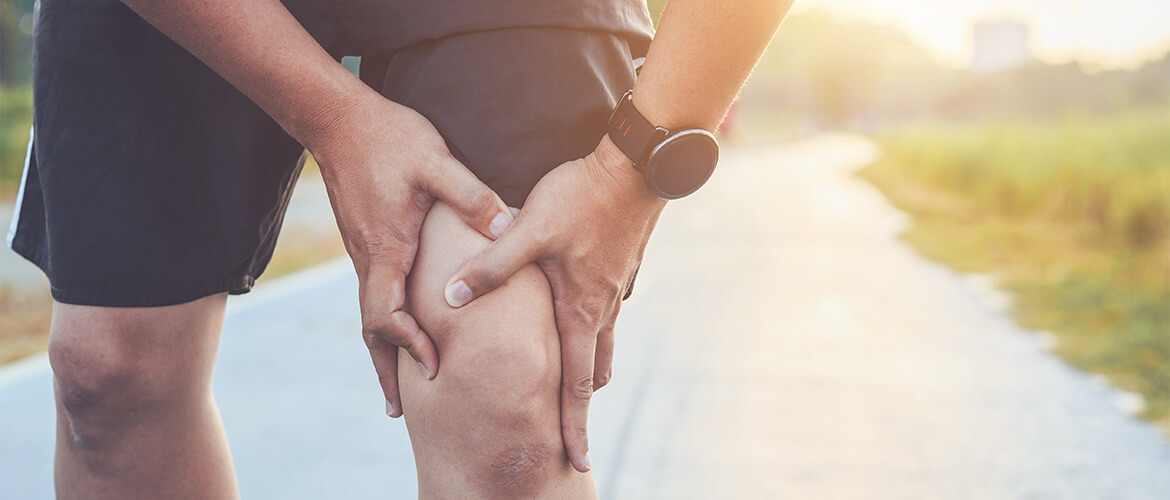After a hectic work week, a long hike with friends, a good game of football or even a bout of intense workout may seem like a good way to relax and recharge yourself. But along comes the sore muscles and stiffness, ruining your otherwise pleasant weekend and also providing a feeling of immense pain and discomfort. Disappointing, isn’t it? Sore muscles often occur when you undertake intense physical activities such as hiking or exercising after a long period of inactivity. Other factors like stress, muscle tension and illnesses may also cause muscle soreness that can last for a few days. Muscle pain, also known as myalgia, can also be a sign of injury. With underlying illnesses or other health conditions that are characterised by a constant lingering ache, or sudden shooting pains, muscle soreness could be a frequent phenomenon. Depending on their lifestyles, health conditions, habits and various other factors, people of all ages and gender are susceptible to muscle soreness and joint pain. Since muscle and joint pain causes extreme discomfort and hinders our activities temporarily, it is better to treat it immediately and obtain relief. Before we take a look at the different ways in which muscle soreness and joint pain can be relieved, let us take a look at the common causes of muscle and joint pains.
Causes of muscle and joint pain:
● Injuries:
Overusing the same muscles while exercising or undertaking any form of physical activity may cause muscle tears, which in turn leads to soreness and pain. Other types of injuries that cause muscle and joint pain include joint sprains, bones fractures, trauma, injury, tendinosis, and tendinitis.
● Medications:
Consuming certain medications used in treatments or therapies may also cause temporary or chronic pain. Medications used in chemotherapy and radiation therapy, BP medications, and statins may cause muscle pain.
● Neuromuscular Disorders:
These disorders affect certain muscles and the nerves that control them. These include Amyotrophic lateral sclerosis, Muscular dystrophy, Myasthenia gravis, and Spinal muscular atrophy (SMA). While these are some of the common causes of muscle soreness and joint pain, other conditions that lead to muscle aches include cancers, chronic fatigue, nutritional deficiency, and stress.
Managing sore muscles and joint pain:
While sore muscles can be treated with ease, the treatment method is often linked to the cause of the pain. If the muscle soreness is caused due to overexertion, stress, or other factors, it can be treated with home remedies, over-the-counter medicines, and topical pain relief treatments. However, if muscle pain is the symptom of an underlying health condition, one must consult a doctor to decide the right treatment method.
Heat and Ice Packs:
Swollen muscles and joints can be extremely painful. Applying an ice pack or cold compress to the affected joint can reduce inflammation. Applying heat to the joints can also ease discomfort, as it increases the blood flow to the affected area and loosens the stiff joint. You can also alternate between applying heat and cold.
Pain Relief Pills:
Taking acetaminophen or other nonsteroidal anti-inflammatory drug (NSAID) such as aspirin or ibuprofen can provide relief from muscle pain. However, using NSAIDs for a prolonged period can have unpleasant side effects. Exercising: Incorporating low-impact exercises such as walking, stretching, cycling, or yoga improves blood circulation and promotes healing. It also helps to strengthen and rebuild muscles. If you are looking to incorporate intense workouts or hit the gym, begin with a low-impact workout routine that slowly builds stamina and muscle strength.
Diet and Supplements:
Consuming processed and junk foods are not healthy. Cutting down these foods from the diet, and eating a healthy, balanced meal with foods rich in antioxidants such as fruits, greens, and other vegetables, will nourish the body and reduce the risk of health problems.
Sleep well:
Giving your body enough time to rest plays an important role in pain relief and healing. It is essential to practice habits that help you get adequate sleep, and allow the body to mend itself.
Massage:
A therapeutic massage will help loosen stiff muscles, increase blood flow, and also relieve stress, thus effectively reducing pain.
Topical Pain Relief Treatment:
One of the best solutions to relieve muscle and joint pain is to use topical pain relief ointments and gels. These gels can be applied over the affected area and massaged into the skin for immediate relief. Using a topical pain relief gel is an effective treatment as it targets the affected area for instant relief and does not cause any side effects of oral painkillers. applying pain relief gel does not require a lot of time or precise techniques.
Omnigel is an effective pain relief gel for sore muscles and joint pain relief that is formulated with Diclofenac, an ingredient with pain-relieving and anti-inflammatory properties. It provides a soothing sensation when massaged into the affected area and provides timely relief from the soreness and discomfort.
Some benefits of Omnigel include:
Quick pain relief
Relief from inflammation and swelling
Reduces muscle stiffness/soreness
Ease of use
Get instant relief from sore muscles and joint pain with Omnigel, now available in spray and gel format. Sold nationwide in pharmacies, online and offline.

